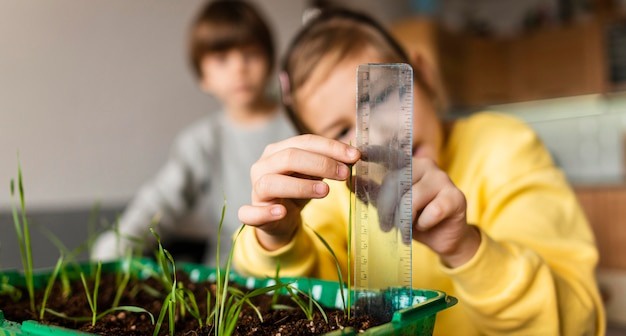In today's rapidly evolving world, we can see how education has become an essential element towards securing our future. As parents, we can feel the importance of education in the current time compared to our time of study. We should always give better education to our children in better settings like child-safe learning environments.
When we talk about starting to educate our children, it is important to ensure our children acquire knowledge in a safe environment. It should be a fundamental responsibility of parents, educators, and institutions to create safe learning environments for children.
In this blog, we will explore the importance of child-safe environments and provide insights into creating a nurturing space for young learners.
What Is A Child-Safe Learning Environment?
A child-safe learning environment is essential in which children can explore, learn, and grow without fear of harm. When children feel safe and supported, they are more likely to be engaged in their learning and reach their full potential. These environments help children to feel safe, promote healthy development, and encourage a love for learning.
It helps keep children safe from harm or danger, both physically and emotionally. It ensures they are not exposed to things that could hurt them physically, like accidents or injuries. It also ensures they do not experience emotional pain or distress, like feeling scared or upset.
Simply put, this environment is a place where children grow confidently without fear.
How To Create A Child-Safe Learning Environment?
Here are some tips on how to implement a child-safe learning environment in your classroom.
1. Define Classroom Rules And Expectations
Expectations are what we want children to do, and rules tell them how to do it. To create a safe learning environment, as an educator, you should define clearly what you want children to do. For example, you should create a rule that tells children to stay safe by using walking feet.
However, you should not forget that children are still learning to think, so it is essential to keep very short and simple rules and expectations and make the rules with pictures.
2. Follow A Consistent Daily Routine
You should create a routine that will help you manage everything you need to do during your busy school days. It will also give children the structure they need. Having a regular schedule can help prevent problems with behavior. To help kids understand and learn the daily routine, you can use a picture schedule every day in class.
3. Create A Sense of Belonging
Children need to feel like they belong and are accepted so that they can feel good about themselves and trust others. Developing excellent and friendly connections with kids and their families can help them feel like they belong.
To develop these positive relationships, you should spend time with children. This can help you learn more about each other. You should show them that you are creating an interest in their interest and also participate with them in learning activities. You can also post their works around the classroom.
The Importance of Child-Safe Learning Environments
The importance of creating child-safe learning environments cannot be overstated. Here is why they are vital:
1. Optimal Learning
When children feel like they are not in danger, they can pay more attention to their schoolwork and participate in learning activities. A safe place helps children be more curious and learn better.
2. Emotional Well-Being
Child-safe learning environments help children feel happy and mentally healthy. A safe and caring environment helps lessen worry and tension, giving children the chance to grow in their emotions and social abilities.
3. Building Trust
The learning environment builds trust between children and their caregivers, like their parents, teachers, or mentors. When children trust their educators and caretakers, they are more willing to seek guidance, ask questions, and take risks in their learning journey.
Conclusion
Creating child-safe learning environments is a shared responsibility involving parents, educators, and institutions. It is not only essential for children's immediate safety but also for their long-term well-being and educational success.
If you are struggling with finding a child-safe learning environment for your child to learn well-being and education, contact Learningville Steam Academy. By focusing on both physical and emotional safety, we can provide children with the secure foundation they need to thrive, explore, and learn. Visit our website to learn more about us.


No comments yet